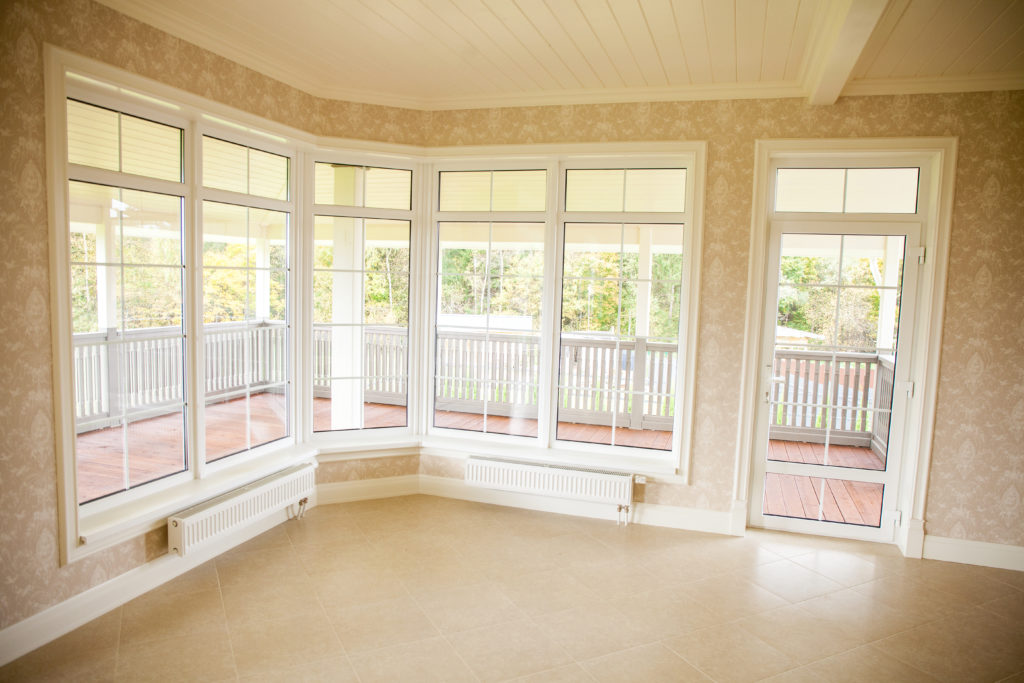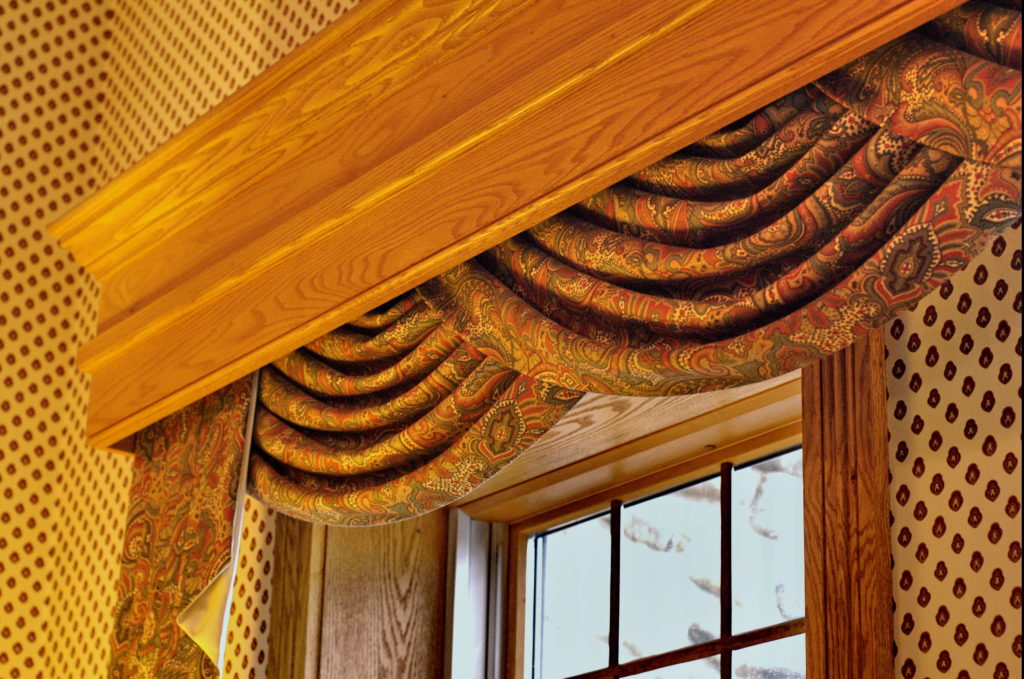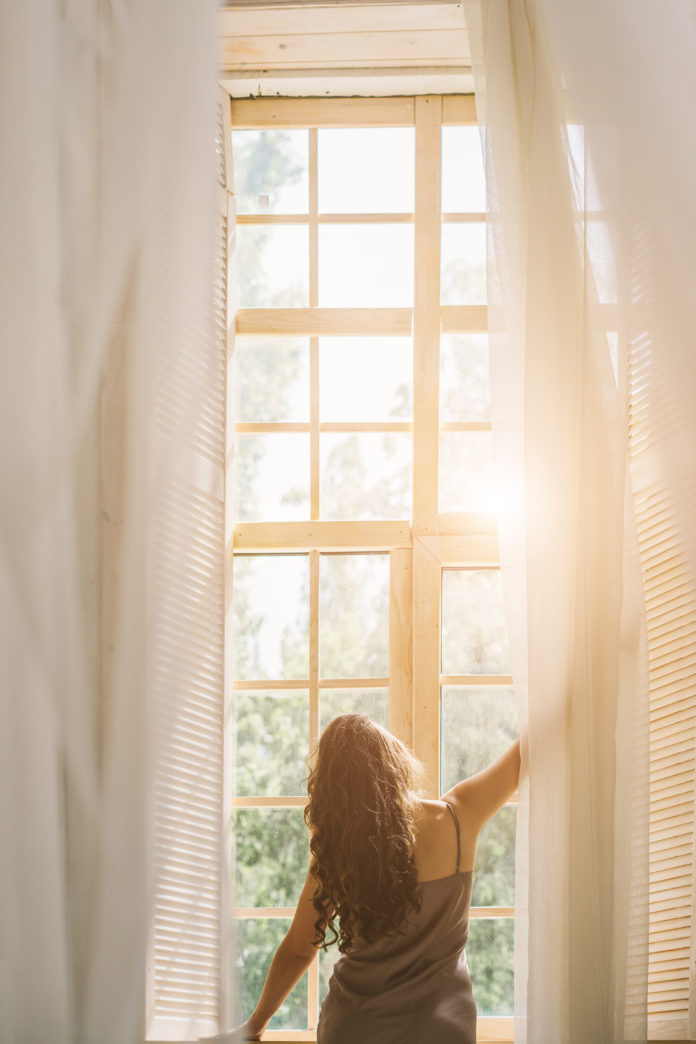If human eyes are windows to the human soul, then does it not make sense to think of windows of a house as eyes to the soul of that house?
Windows provide both functional and aesthetic value and are important components of home design and construction. They add architectural interest, break up the monotony of solid walls, and let in natural light. Windows can be opened to let in fresh air and closed to keep out cold air and bugs. Windows also give us an opportunity to change the character of our home based on how we dress them. Window treatments themselves, however, have their own functions, and sorting through all of the options can be confusing.
Window treatments can…
- give us added privacy
- soften harsh light and keep out midday heat
- darken a room to block out all light so you can sleep better
- be adjusted to let in various amounts of light
- be used for privacy
- change the acoustics of a room
- add color and texture to your decor

With these high expectations for what the proper window treatments can accomplish, it is easy to get overwhelmed by the decision making process when you decide it is time for a change. We are here to help! We know that the proper interior finishes, like window treatments, can help you gain more enjoyment from your home AND can increase the marketability of your home when it comes time to sell. And while we generally think of window treatments as a function of interior design, remember that when it comes to windows, how you dress the windows can affect how your house looks from the outside.
First, a few definitions to make sure we are all on the same page:
- Valance: fabric that hangs straight across the top of a window to hide the hardware of other window treatments. At its simplest, it is gathered onto a rod and hung from the top of a window frame.
- Swag: fabric that is loosely slung across the top of a window like a scarf.
- Cornice: a wooden structure covered in fabric (or paint or wallpaper) that serves as a valance and covers the hardware of other window treatments
- Shades: a fabric panel, sized to the width and length of each window. Shades are raised and lowered in their entirety. Various types of shades include, roller shades, pleated shades, roman shades, balloon shades
- Blinds: typically composed of horizontal slats of metal, wood, or composite material, blinds can be louvered open or closed to let in various amounts of light. They can also be raised and lowered in their entirety, like a shade. You can also find vertical blinds, which were popular in the 1980’s and 1990’s but are less trendy in current decor.
- Plantation Shutters: Louvered shutters on the inside of your home.
- Curtains: fabric panels, usually sold in pairs, hung from a rod and can vary in length and coverage
- Drapes: lined curtains that can better block out light, and usually hang from the top of the window to the floor, and usually in heavier fabrics. Sometimes pleated, and hung with heavier more sturdy hardware

Prices for window treatments can run the gamut from economical DIY solutions to more custom designs that employ professional expertise and craftsmanship and that represent a serious financial investment. With this in mind, it is important to do your own research and make mindful well-informed decisions before you start buying and hanging.
To consider when purchasing any window treatment:
- Length of treatment: Literally, how long will the treatments be? Will they sit only within the opening of the window frame? Or are you going to hang them higher and let them drape all the way to the floor? Somewhere in between? Know what you are looking for before you start making decisions.
- Material: whether you are picking out shades, blinds, curtains, or drapes, what the treatments are made of will affect the type of hardware you buy, the expense, and the upkeep. The material will also affect how much light filtering and privacy you have.
- The needs of each room: a bedroom has different needs than a laundry room and a kitchen. Find the window treatment solution that fits the objectives of the room you are in.
- Hardware: rods, finials, tie backs, etc. Do you want the hardware to be hidden or make a statement? If you want the hardware to be part of your decor, make sure it compliments what you already have in place in other parts of the room. For example, if your home is mostly farmhouse chic, maybe don’t go with the edgy contemporary hardware….it will look out of place and you will have to spend more money to replace it in 3 months when you get ready for that big holiday party you are going to throw.
- Ignore the bells and whistles: Don’t be flummoxed by technological innovations in window treatments. Stick to the basics.
If you want a window treatment refresh, don’t feel like you have to start from scratch. If your windows already have blinds or shades or shutters, you can easily layer on a valance, swag or cornice to add interest and cover up hardware. Alternatively, you could add curtain panels to either side of the window that you can open and close for added privacy and light-blocking or you can just leave them open and make them completely aesthetic in function.
While current trends for 2021 seem to be slanting toward minimalism, remember that Grandmillennial design is part of the current design palette, so don’t feel like you have to stick to neutral colors and clean lines. We like to scour the internet for wisdom from other bloggers about all sorts of design trends, and especially with windows, there is a lot to consider:
- If your walls are painted neutral, consider using a pop of color on the windows to add interest.
- If you are remodeling or replacing windows, you might also consider black window frames on the inside and outside of your home, which is another way to create architectural interest, but MAY affect your choice of window treatments.
- Layer window treatments.
In Conclusion, remember these important tips:
- Measure correctly before shopping so you know exactly what you are looking for
- Make sure you know what you want and what the terminology is before you commit. HGTV is always a great place to start for the basics, like in this Window Treatments 101 piece.
- Pick the right hardware to match your decor AND that will support the heaviness of your materials
- Measure correctly and accurately when it comes time to install so that the treatments hang straight and fall at the proper place.

Are you totally confused about your window treatment options? Remember that our agents see it all, from the most out-dated to the most cutting edge. Go ahead and call your favorite F.C. Tucker Emge REALTOR® and see if they can pop over to take a look at your window situation. They might even have a design professional up their sleeve that they can refer to you for a deeper dive into your options. Alternatively, they can refer you to a handyman who can help measure and hang things precisely. Afterall, if you have spent all that time and money researching and purchasing new window treatments, you want to make sure they are hung right so they last for many years to come. Happy Window Trimming and Let’s Talk and tell us how it goes!




